 At the age of 16, I discovered the Buddha Dharma because of a paper I was required to write in high school on a religion other than Judeo-Christian. As I reflected on what I was reading about Buddhism, I felt like I had found ‘home‘. My heartfelt thought was, “This makes such great sense.”
At the age of 16, I discovered the Buddha Dharma because of a paper I was required to write in high school on a religion other than Judeo-Christian. As I reflected on what I was reading about Buddhism, I felt like I had found ‘home‘. My heartfelt thought was, “This makes such great sense.”
During much of my life, until I first discovered & then eventually deeply connected with the Buddha Dharma, I often experienced various degrees of alienation, separateness, feeling different, alone, lonely & not part of the ‘weave‘/the culture of ‘ordinary‘ American life. Because of the family that I grew up in & the cultural, non-competitive, social, political, religious & deeply compassionate values that I was raised with, I never felt like I ‘fit in‘. When I began pursuing the Buddha Dharma, over time I found ‘home‘ in the midst of it all.
Of course, I spent years trying out various Dharma ‘shoes‘ – learning a great deal & being well fed with each step, with each bite taken – before eventually finding that the Theravada shoes & food fit the best & were the most nourishing. And so I dropped more fully & deeply into the exquisite garden of Theravada Buddhism. As the years have rolled on & blossomed, I have never had any doubt that the Buddha Dharma is ‘home‘ no matter where I am, what I’m engaged in, who I’m with… in any situation, in any place in the world.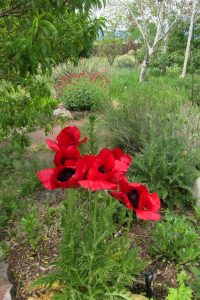
Seventeen years ago – after four & a half years spent as resident teacher for staff at the Insight Meditation Society in Barre, MA, as well as many years teaching the Buddha Dharma in the U.S. & internationally – I & a small group of dedicated Dharma students founded The Mountain Hermitage in Taos, New Mexico. I have been the founding & guiding teacher since our beginning. Over all these years, we have offered many wonderful retreats for a full house of sixteen students, with incredibly fine teachers & with many of our retreats oriented for more experienced students. A successful & gratifying aspect of our Mountain Hermitage offerings has been our vision & mission of offering substantial scholarship support for those who would not be able to attend a Mountain Hermitage retreat without this help, including monastics who are welcomed to attend any TMH retreat for free. I am also filled with joy & gratitude that promotion & support of diversity among our teachers & retreat participants – another primary aspect of our TMH vision – continues to blossom & manifest.
Being part of the unfolding & flowering of The Mountain Hermitage has been & continues to be a gift of boundless benefit & value over the years for those who have come to learn & practice at TMH retreats, for each & every teacher who has offered teachings, for everyone who has  been & is on the Hermitage staff, and for myself as guiding teacher.
been & is on the Hermitage staff, and for myself as guiding teacher.
And so here I am now, soon stepping into my 80th year of life. This year, I have stopped teaching residential retreats at The Mountain Hermitage or anywhere else. Going forward, TMH will continue offering retreats with a wonderful array of teachers, and I will continue as The Mountain Hermitage guiding teacher for as long as I’m able. I’ll also continue to meet one-on-one with a limited number of students for practice meetings, in-person or via telephone or Zoom, and I will continue to offer a mini-residency with the Santa Fe Vipassana Sangha once or twice each year. I may also offer occasional one-month study & practice classes on a weekly basis in Taos. And I look forward to spending time in my clay studio making pottery & sculpture, and outside gardening when that is in season.
The Buddha Dharma in its timelessness & its continuing relevancy in today’s challenging & beautiful world will always be ‘home‘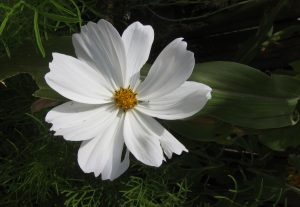 no matter where I am, what I’m engaged in or who I’m with… in any situation, any place in the world.
no matter where I am, what I’m engaged in or who I’m with… in any situation, any place in the world.
With metta & a deep bow of gratitude,
Marcia
All flower photos from Marcia’s garden.

 The beauty of the dharma is worth reflecting on from time to time. It helps to remind us of the power of the practice and where it can take us in any moment. Another way to express this could be “gladdening the mind.”
The beauty of the dharma is worth reflecting on from time to time. It helps to remind us of the power of the practice and where it can take us in any moment. Another way to express this could be “gladdening the mind.”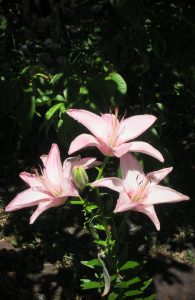
 in the world, because we’re constantly concerned with ourselves. We’re always interested in how much we can get, how well we can perform, how comfortable we can be. The Buddha mentioned in a discourse that “oneself is dearest to oneself.” So with all that, why is it so difficult to actually love oneself?
in the world, because we’re constantly concerned with ourselves. We’re always interested in how much we can get, how well we can perform, how comfortable we can be. The Buddha mentioned in a discourse that “oneself is dearest to oneself.” So with all that, why is it so difficult to actually love oneself?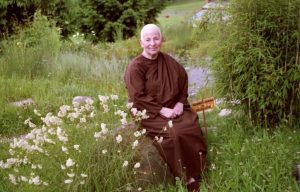 then one can easily accept these six roots in everybody. No difficulty at all, when one has seen them in oneself. They are the underlying roots of everyone’s behavior. Then we can look at ourselves a little more realistically, namely not blaming ourselves for the unwholesome roots, not patting ourselves on the back for the wholesome ones, but rather accepting their existence within us. We can also accept others more clear-sightedly & have a much easier time relating to them…
then one can easily accept these six roots in everybody. No difficulty at all, when one has seen them in oneself. They are the underlying roots of everyone’s behavior. Then we can look at ourselves a little more realistically, namely not blaming ourselves for the unwholesome roots, not patting ourselves on the back for the wholesome ones, but rather accepting their existence within us. We can also accept others more clear-sightedly & have a much easier time relating to them…
 For one just starting the practice of meditation, there is often hope for a cure.
For one just starting the practice of meditation, there is often hope for a cure. strengthen us in all dimensions of our being.
strengthen us in all dimensions of our being. Every now & again we get irritated – just a little bit. It is nothing major, and it does not throw us out of balance. But there is this little contraction when a meditator comes into the meditation hall & is noisier than we think she or he should be. “Can’t you sit down more quietly? Don’t you see that I am deeply meditating?” Then we take a deep breath, realising how silly it is to get upset about this triviality & settle back into our practice. Concentration is getting better & deeper – and then somebody coughs. “How inconsiderate!” the mind comments. Then back to the experience of the breath. Now mindfulness is really picking up, the mind is sharp & clear – and somebody blows the nose. And this blows the mind, “Don’t you know that I was just about to have a really deep experience?!”
Every now & again we get irritated – just a little bit. It is nothing major, and it does not throw us out of balance. But there is this little contraction when a meditator comes into the meditation hall & is noisier than we think she or he should be. “Can’t you sit down more quietly? Don’t you see that I am deeply meditating?” Then we take a deep breath, realising how silly it is to get upset about this triviality & settle back into our practice. Concentration is getting better & deeper – and then somebody coughs. “How inconsiderate!” the mind comments. Then back to the experience of the breath. Now mindfulness is really picking up, the mind is sharp & clear – and somebody blows the nose. And this blows the mind, “Don’t you know that I was just about to have a really deep experience?!”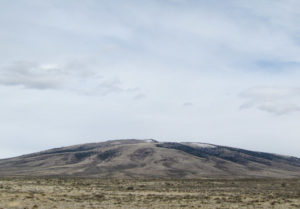 ing & insights to happen. With this, we become very selective & exclude many experiences because they do not fit into our idea.
ing & insights to happen. With this, we become very selective & exclude many experiences because they do not fit into our idea. phenomena over which we have no absolute control. The art of vipassana meditation is to deal with all experiences in the same way. One object is not better than another. Mindfulness is not discriminating. A so-called ‘disturbance‘ is mind-made: sound is just sound, pain is just pain, heat is just heat, cold is just cold, smell is just smell, silence is just silence …..
phenomena over which we have no absolute control. The art of vipassana meditation is to deal with all experiences in the same way. One object is not better than another. Mindfulness is not discriminating. A so-called ‘disturbance‘ is mind-made: sound is just sound, pain is just pain, heat is just heat, cold is just cold, smell is just smell, silence is just silence ….. From The Mountain Hermitage editor: Buddhist meditation is described as a training method for purifying mind & heart. This purification process is what leads one towards liberation/Nibbana. The first of Seven Stages of Purification is Purification of Virtue or Sila. Other conditions are also important to undertaking meditation in a retreat setting for wholesome & liberating results to occur. Below, we hear from Sayadaw Vivekananda & Marcia Rose, both teachers of the Summer 2019 Five-week Vipassana retreat, on how to make best use of retreat time by following the Precepts & developing wholesome qualities of heart & mind, before & during practice in a retreat. As Sayadaw emphasizes, “A retreat offers a precious opportunity to develop concentration & intuitive wisdom, and so we need to make good use of our time.”
From The Mountain Hermitage editor: Buddhist meditation is described as a training method for purifying mind & heart. This purification process is what leads one towards liberation/Nibbana. The first of Seven Stages of Purification is Purification of Virtue or Sila. Other conditions are also important to undertaking meditation in a retreat setting for wholesome & liberating results to occur. Below, we hear from Sayadaw Vivekananda & Marcia Rose, both teachers of the Summer 2019 Five-week Vipassana retreat, on how to make best use of retreat time by following the Precepts & developing wholesome qualities of heart & mind, before & during practice in a retreat. As Sayadaw emphasizes, “A retreat offers a precious opportunity to develop concentration & intuitive wisdom, and so we need to make good use of our time.” Outer causes and conditions: 1) the guidance of a qualified teacher. 2) One must be able to practice continuously in a quiet, healthy & pleasant environment, such as at a retreat center, where one’s material needs are easily met. 3) It’s crucial to have good companions whose ethical discipline & views are compatible with one’s own.
Outer causes and conditions: 1) the guidance of a qualified teacher. 2) One must be able to practice continuously in a quiet, healthy & pleasant environment, such as at a retreat center, where one’s material needs are easily met. 3) It’s crucial to have good companions whose ethical discipline & views are compatible with one’s own.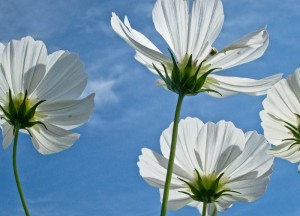
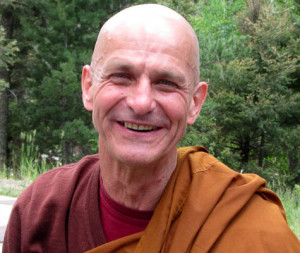 for development of concentration and wisdom:
for development of concentration and wisdom: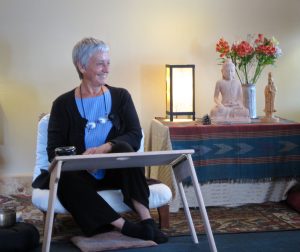 In Buddhist understanding, the mind is not considered to just be the brain. Experiential understanding through our practice of Concentration/Samatha, Vipassana & the Brahma Viharas can show us that mind consciousness emanates from the energy center of the heart. The term ‘heart-mind consciousness’ that is often used stems from this experiential understanding. And each of us knows from our own experience, this heart-mind can make a heaven of hell or a hell of heaven.
In Buddhist understanding, the mind is not considered to just be the brain. Experiential understanding through our practice of Concentration/Samatha, Vipassana & the Brahma Viharas can show us that mind consciousness emanates from the energy center of the heart. The term ‘heart-mind consciousness’ that is often used stems from this experiential understanding. And each of us knows from our own experience, this heart-mind can make a heaven of hell or a hell of heaven.
 Wisdom is not perfected in one whose mind is not steadfast,
Wisdom is not perfected in one whose mind is not steadfast,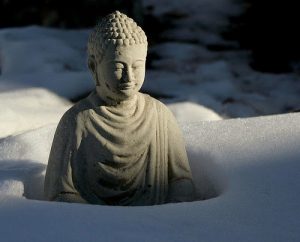 In the usual iconography of the temple or the local Wok
In the usual iconography of the temple or the local Wok ds of our own making,
ds of our own making,
 Aaah, says the Buddha, lifting his eyes
Aaah, says the Buddha, lifting his eyes Buddha spoke regularly of the power words have to heal or harm, as well as to play an active role in our awakening individually & collectively.
Buddha spoke regularly of the power words have to heal or harm, as well as to play an active role in our awakening individually & collectively.
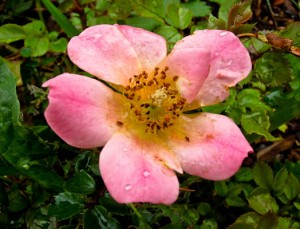 and create more opportunities to give voice to our deepest values. As we witness the extreme polarization in the world today, the absence of real dialogue in so many sectors of civil society, we need these tools more than ever.
and create more opportunities to give voice to our deepest values. As we witness the extreme polarization in the world today, the absence of real dialogue in so many sectors of civil society, we need these tools more than ever.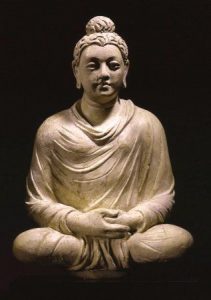 Live happily,
Live happily,
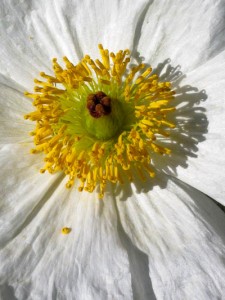 good fortune,
good fortune,